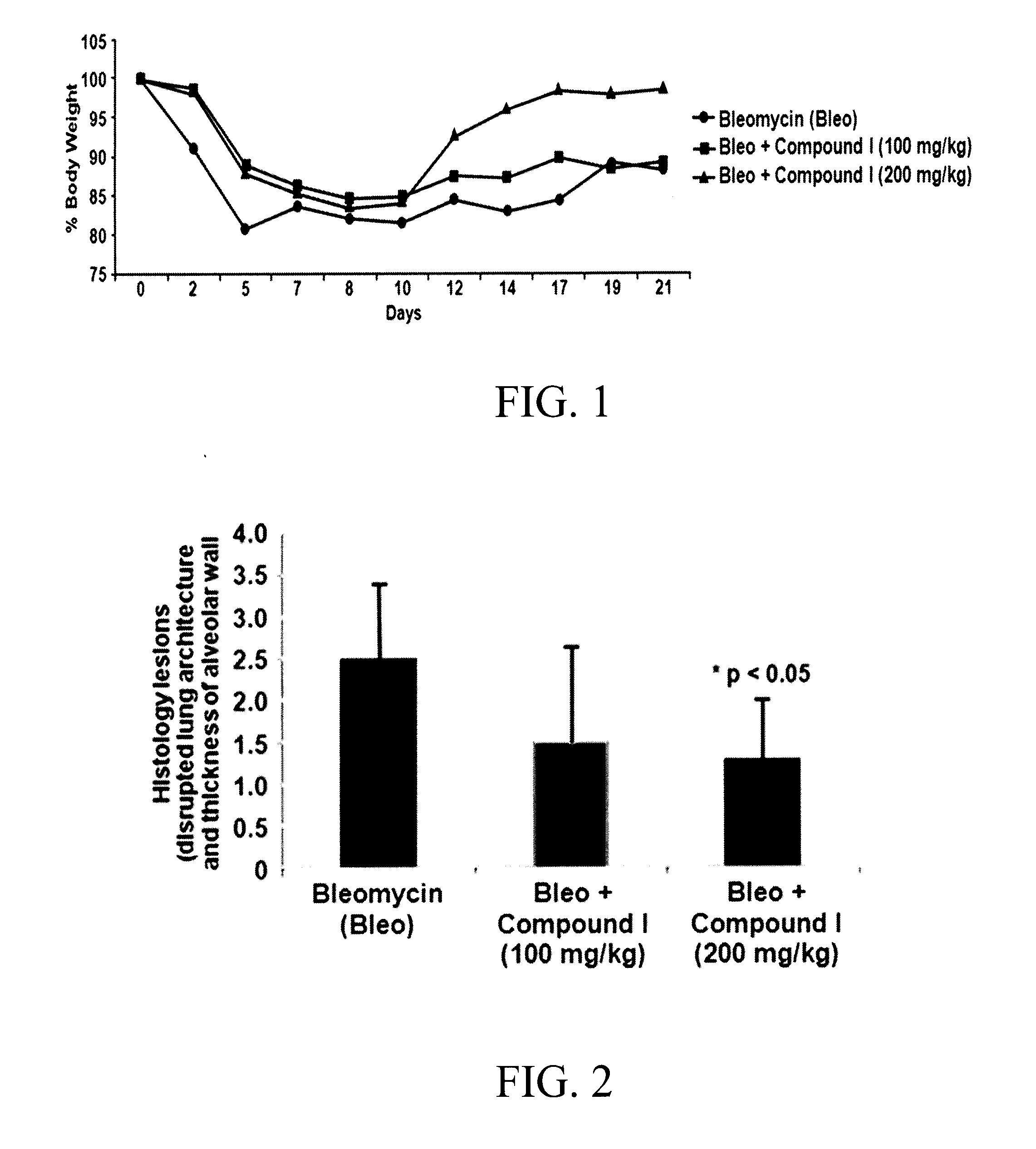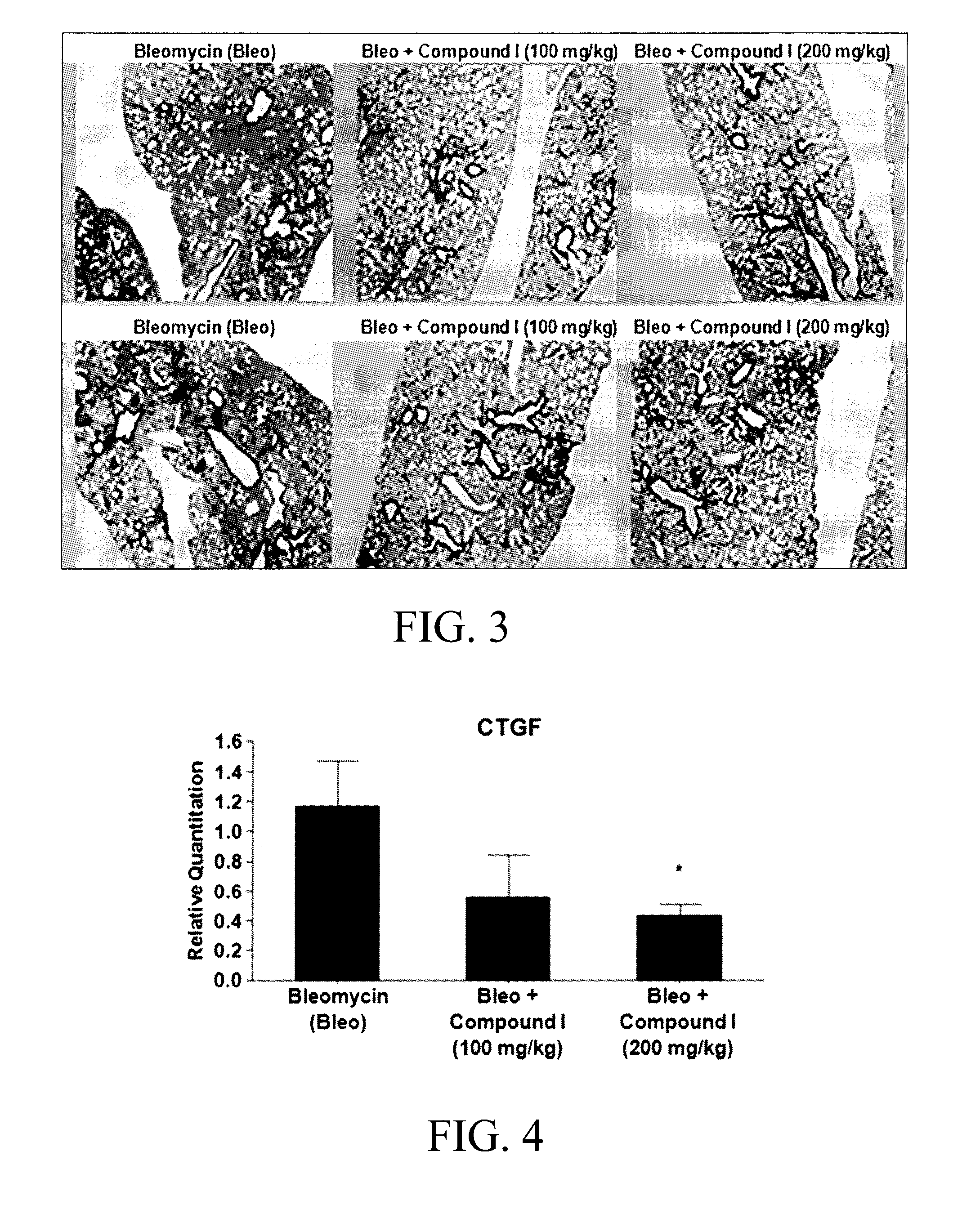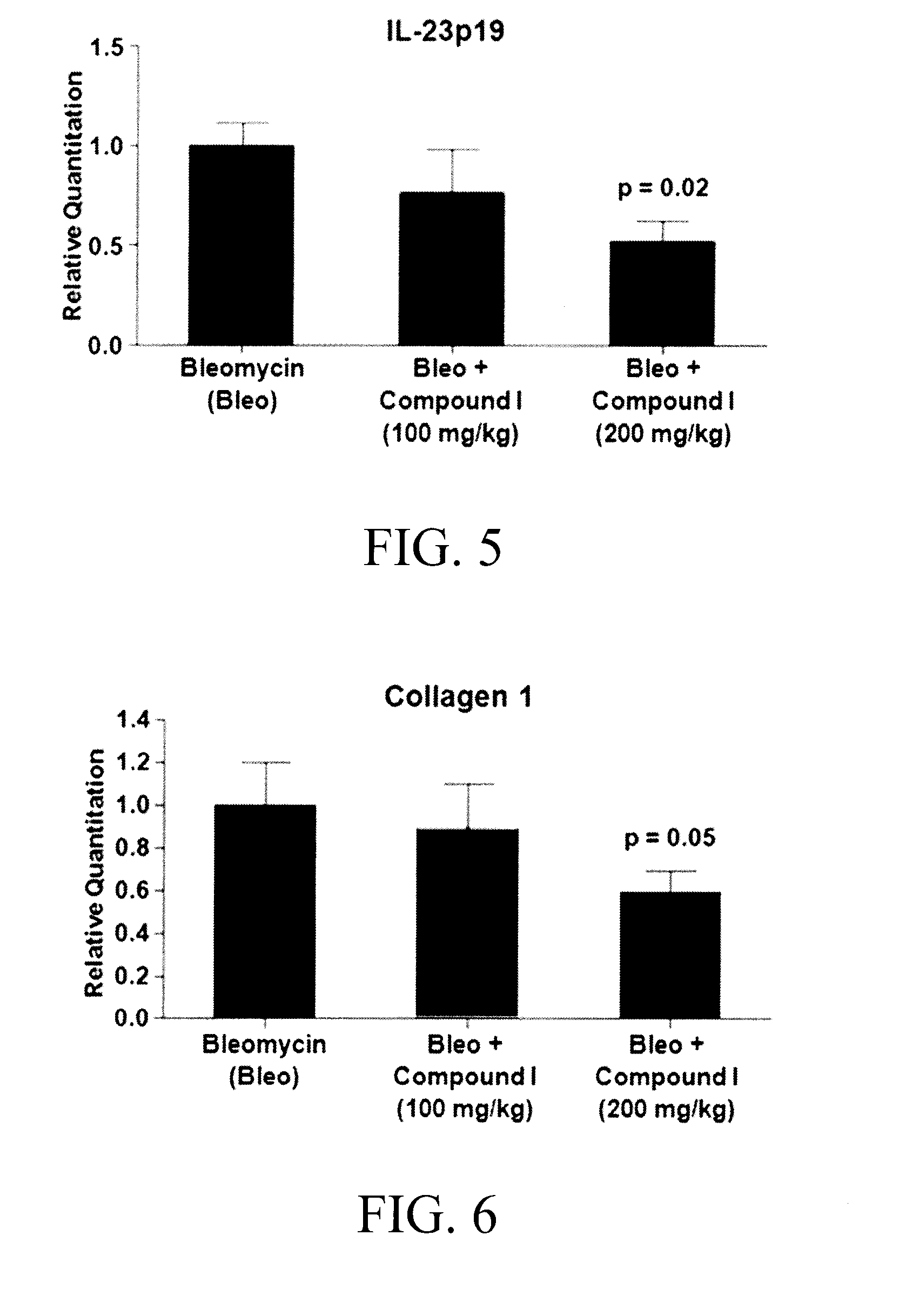Substituted aromatic compounds for the treatment of pulmonary fibrosis, liver fibrosis,skin fibrosis and cardiac fibrosis
a technology of aromatic compounds and emphysema, which is applied in the direction of biocide, antibody medical ingredients, drug compositions, etc., can solve the problems of no cure or means for reversing the scarring of lung tissue, no significant improvement in airflow, narrowing of small airways, etc., and achieve good safety.
- Summary
- Abstract
- Description
- Claims
- Application Information
AI Technical Summary
Benefits of technology
Problems solved by technology
Method used
Image
Examples
example 1
Experimental Procedure for the Preparation of the Sodium Salt of 3-Pentylphenylacetic Acid (Compound I)
[0158]All HPLC chromatograms and mass spectra were recorded on an HP 1100 LC-MS Agilent instrument using an analytical C18 column (250×4.6 mm, 5 microns) with a gradient over 5 min of 50-99% CH3CN—H2O with 0.01% TFA as the eluant and a flow of 2 mL / min or a gradient over 3 min of 50-99% CH3CN—H2O with 0.01% TFA as the eluant followed by isocratic over 3 min and a flow of 2 mL / min.
Compound I: Synthesis Using Modified Procedure of Sonogashira:
[0159]
[0160]Step 1:
[0161]To a solution / suspension of 3-bromophenylacetic acid (5.02 g, 23.33 mmol) in ethanol (100 mL) at room temperature was added concentrated sulfuric acid (1 mL). The colorless solid was then stirred overnight at 80° C. The solution was concentrated under reduced pressure. The residue was diluted with ethyl acetate (25 mL), water (25 mL) and the two layers were separated. The aqueous layer was extracted with ...
example 2
Experimental Procedure for the Preparation of the Sodium Salt of 3-Hydroxy-5-Pentylphenylacetic Acid (Compound II)
[0170]Step 1:
[0171]A solution of methyl[3,5-dihydroxyphenyl]acetate (2.1 g, 11.5 mmol) in acetone (100 mL) was treated with potassium carbonate (2.4 g, 17.4 mmol), potassium iodide (383 mg, 2.31 mmol) and benzyl bromide (1.5 mL, 12.7 mmol), and the mixture was stirred at room temperature overnight. The reaction was diluted with water and extracted with dichloromethane (×3). Combined organic extracts were dried over sodium sulfate and evaporated in vacuo. The crude material was purified on a Biotage™ 40M column (silica), eluting with 40% ethyl acetate / hexane, to give methyl[3-benzyloxy-5-hydroxyphenyl]acetate (1.0 g, 33%). 1H NMR (400 MHz, CDCl3): δ 7.32-7.42 (m, 5H), 6.48 (d, J=1.4 Hz, 1H), 6.38-6.39 (m, 2H), 4.99 (s, 2H), 3.69 (s, 3H), 3.53 (s, 2H).
[0172]Step 2:
[0173]A solution of the benzyl ether (1.04 g, 3.8 mmol) in dichloromethane (15 mL) at 0° C., was treated with ...
example 3
Experimental Procedure for the Preparation of the Sodium Salt of 3-Fluoro-5-Pentylphenylacetic Acid (Compound III)
[0182]
[0183]Step 1:
[0184]A solution of 3-bromo-5-fluorobenzoic acid (2.74 g, 12.5 mmol) in tetrahydrofuran (6 mL), at 0° C. under nitrogen, was treated with borane-tetrahydrofuran complex (1M, 15 mL, 15 mmol) in small portions over 12 min, and the reaction was then stirred at 0° C. for 70 minutes, and at room temperature for 22 h. The reaction was quenched by addition of methanol (10 mL), and the methanolic mixture was stirred at room temperature for 3 h, and then evaporated in vacuo, with co-evaporation from methanol, then from ethyl acetate, to give the crude product. The material was dissolved in ethyl acetate (200 mL), and the solution was washed with 0.5M aqueous sodium hydroxide (200 mL), and with saturated aqueous sodium chloride (100 mL); then dried over sodium sulfate; filtered and evaporated in vacuo to give 3-bromo-5-fluorobenzyl alcohol (1.79 g, 67%). 1H NMR ...
PUM
| Property | Measurement | Unit |
|---|---|---|
| Fraction | aaaaa | aaaaa |
| Dimensionless property | aaaaa | aaaaa |
| Dimensionless property | aaaaa | aaaaa |
Abstract
Description
Claims
Application Information
 Login to View More
Login to View More - R&D Engineer
- R&D Manager
- IP Professional
- Industry Leading Data Capabilities
- Powerful AI technology
- Patent DNA Extraction
Browse by: Latest US Patents, China's latest patents, Technical Efficacy Thesaurus, Application Domain, Technology Topic, Popular Technical Reports.
© 2024 PatSnap. All rights reserved.Legal|Privacy policy|Modern Slavery Act Transparency Statement|Sitemap|About US| Contact US: help@patsnap.com










